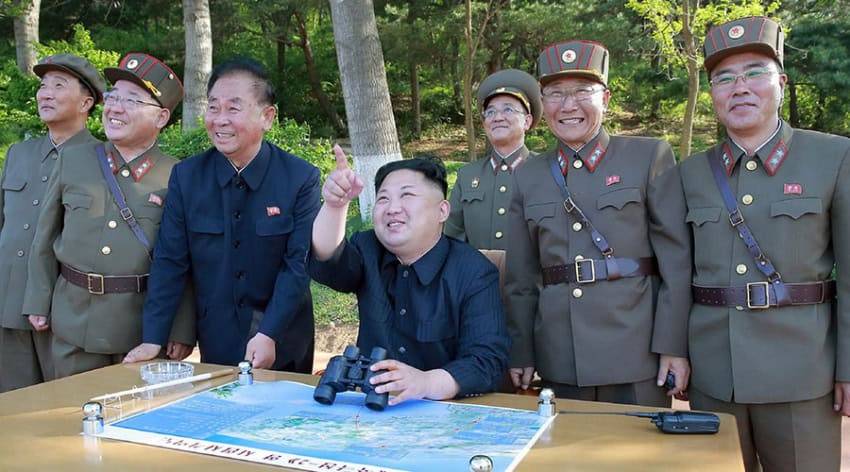WASHINGTON – North Korea, if left unchecked, is on an “inevitable” path to obtaining a nuclear-armed missile capable of striking the United States, Defense Intelligence Agency Director Lieutenant General Vincent Stewart told a Senate hearing on Tuesday.
The Defense Intelligence Agency (DIA) has provided the first official US assessment of North Korea’s latest missile test, telling a Senate committee that the reclusive nation is on a clear trajectory to obtaining a nuclear-armed missile that could hit the US.
DIA Director Lieutenant General Vincent Stewart and Director of National Intelligence Dan Coats testified before the Senate Armed Services Committee about worldwide threats, just two days after North Korea test-launched its Pukguksong-2 intermediate range ballistic missile (IRBM).
https://youtu.be/8IFHpkv6jLM
Although the US confirmed Sunday’s launch, American experts doubted the reliability of the new solid-fuel type for the IRBM after so few tests, Reuters reported. Solid fuel is harder to produce than liquid, but is more stable and can be transported in the missile tank to allow for a swift launch.
Pyongyang also conducted a medium-range ballistic missile test the previous Sunday, and said the rocket used has the “tactical specifications and technical characteristics” of being capable of carrying nuclear warheads.
The tests allowed North Korea to move a step closer to its “inevitable” goal of developing a nuclear-armed warhead that could reach the US, Stewart said.
“If left on its current trajectory the regime will ultimately succeed in fielding a nuclear-armed missile capable of threatening the United States homeland,” he told the senators. “While nearly impossible to predict when this capability will be operational, the North Korean regime is committed and is on a pathway where this capability is inevitable.”
The principal impediment to achieving that goal so far is ensuring that its ballistic missiles survive reentry into the atmosphere, according to Stewart.
“They understand the physics, it’s just a matter of design,” he said.
https://youtu.be/pIALWzPw9fo
Sunday’s missile test showed capabilities “short of an ICBM” (intercontinental ballistic missile), Coats said, an analysis consistent with the initial assessment done soon after the North Korean test.
“Taken together,” the missile tests, along with the 2016 tests of more than a dozen theater ballistic missiles and its submarine-launched ballistic missile system, its launch of a satellite into space last year, and its launch earlier this year of what North Korea said was a land-based variant of its submarine-launched ballistic missile “highlight Pyongyang’s commitment to diversifying its missile forces and nuclear delivery options while strengthening missile force survivability,” Stewart said.














